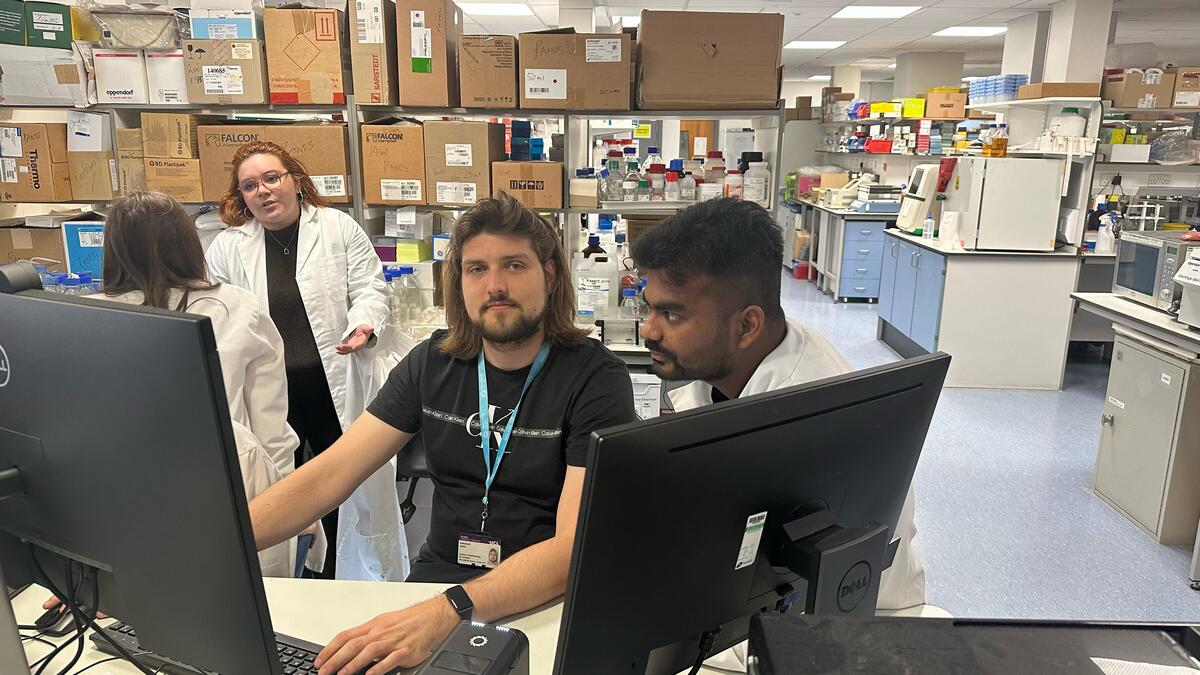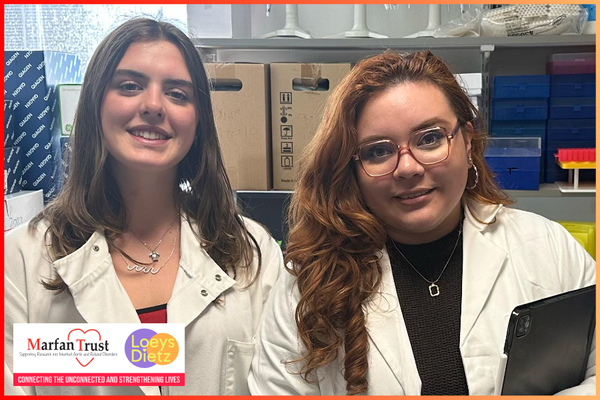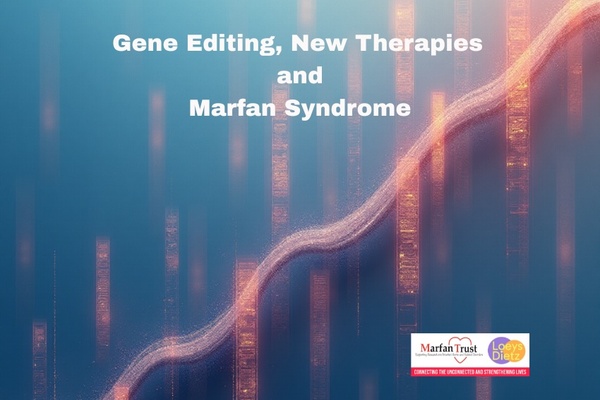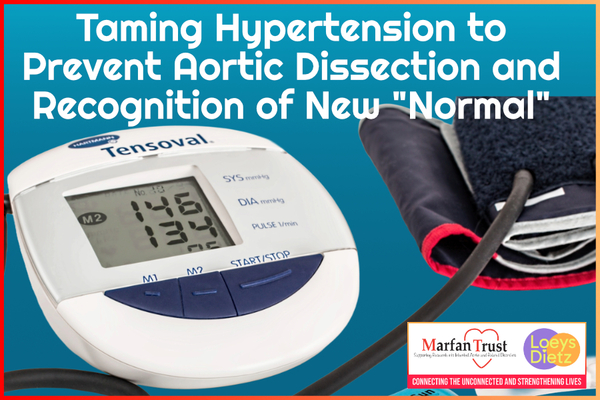Aspiring research scientist Gemma has just emerged from a whirlwind week in our laboratory, hugely enthused. “This experience has been incredible to get an insight into Marfan Syndrome and all the brilliant research that Jose and his team carry out, all of which benefits my family”. !
(Gemma, left, is pictured with MSc student Jessica)
Gemma (pictured left) is studying for her A Levels and hopes to pursue medical research as a career, probably influenced by her close connection to Marfan syndrome. Both her brother and mother have the condition!
by José Aragon-Martin
Gemma spent a week in the Sonalee Lab (part of the Marfan Trust Laboratory). We were learning how to use a new machine at QMUL that reads long pieces of DNA. We’re using it to study gene changes in people with aorta aneurysms. We did our work and training at both QMUL and UCL. The DNA sequencer is in the Sonalee Lab at QMUL, but at UCL, we used another machine that measures DNA amounts very accurately. QMUL doesn’t have that machine, but we could use it because we’re working with UCL researchers. We were very lucky—I secured an expert to train us on the DNA sequencer for free, saving us £22,000, which is what the company would charge for two days of training.

Pictured: Aleksandr from UCL training MSc student Jisan (far right), Gemma (back turned to camera) and MSc student Jessica on the Oxford Nanopore P2-Solo Sequencer.
The Oxford Nanopore PromethION 2 Solo (P2 Solo) is a small but powerful machine used in research labs to read DNA and RNA. It uses a special method called nanopore sequencing, which reads long strands of DNA or RNA by sensing changes in electric current as the molecules move through tiny holes.
Main Features:
Two Flow Cells: The P2 Solo can use two sequencing units (called flow cells) at the same time or one at a time. This gives scientists more options for running experiments.
Large Data Output: Each flow cell can produce a huge amount of data—enough to study very large genomes in detail.
Small Size: The machine is small (about the size of a lunchbox) and light (1.5 kg), so it fits easily on a lab bench.
Needs an External Computer: It doesn't work on its own—you have to connect it to another computer (like a GridION or your own) to run the software.
Can Be Scaled Up: It's great for labs that do a moderate number of tests per year (around 200). If needed, you can upgrade to a bigger system later.
The P2 Solo is useful for many types of genetic studies, like looking at entire genomes, studying all the microbes in a sample (metagenomics), analyzing RNA (transcriptomics), and studying changes in DNA (epigenetics).









